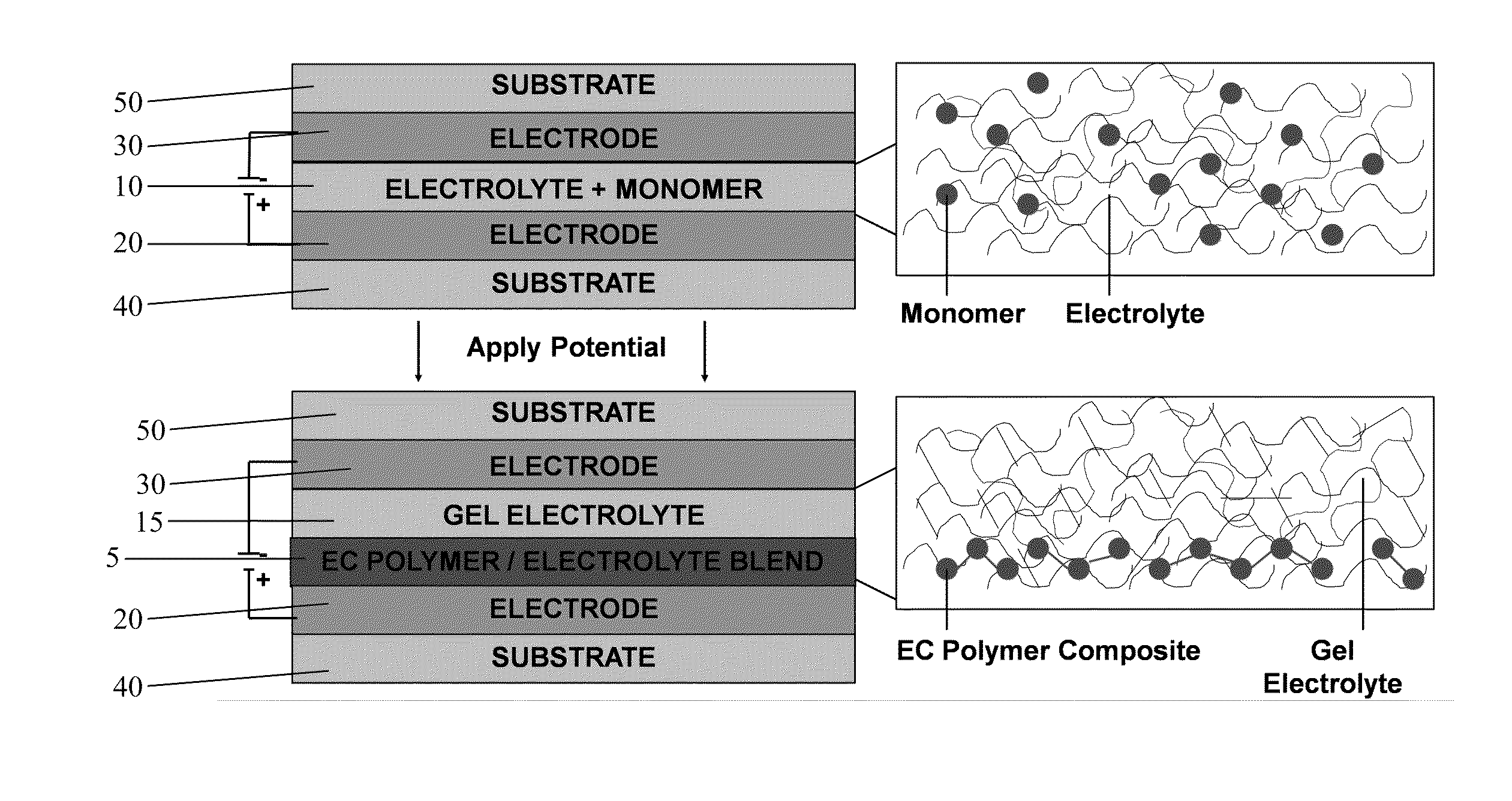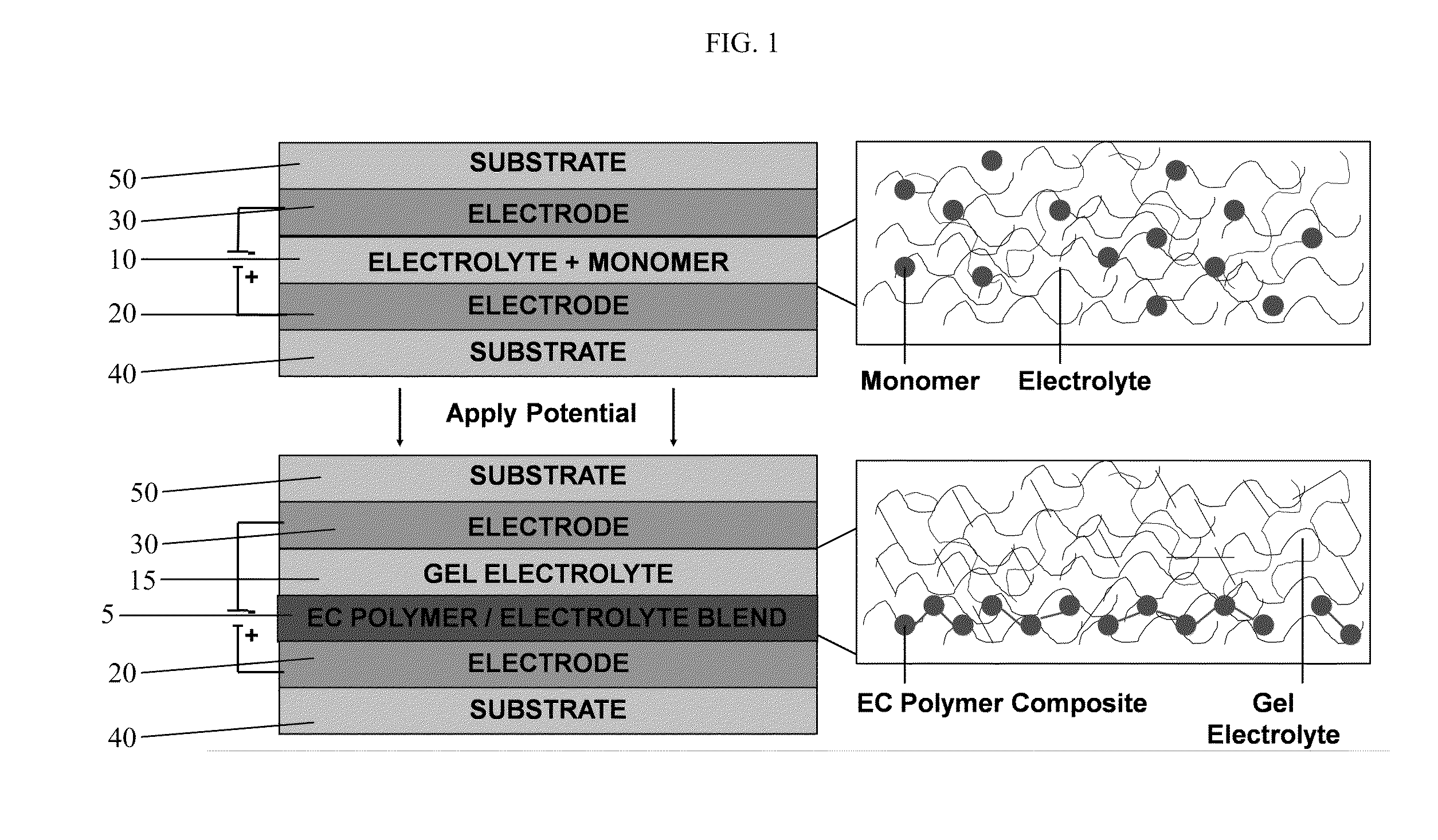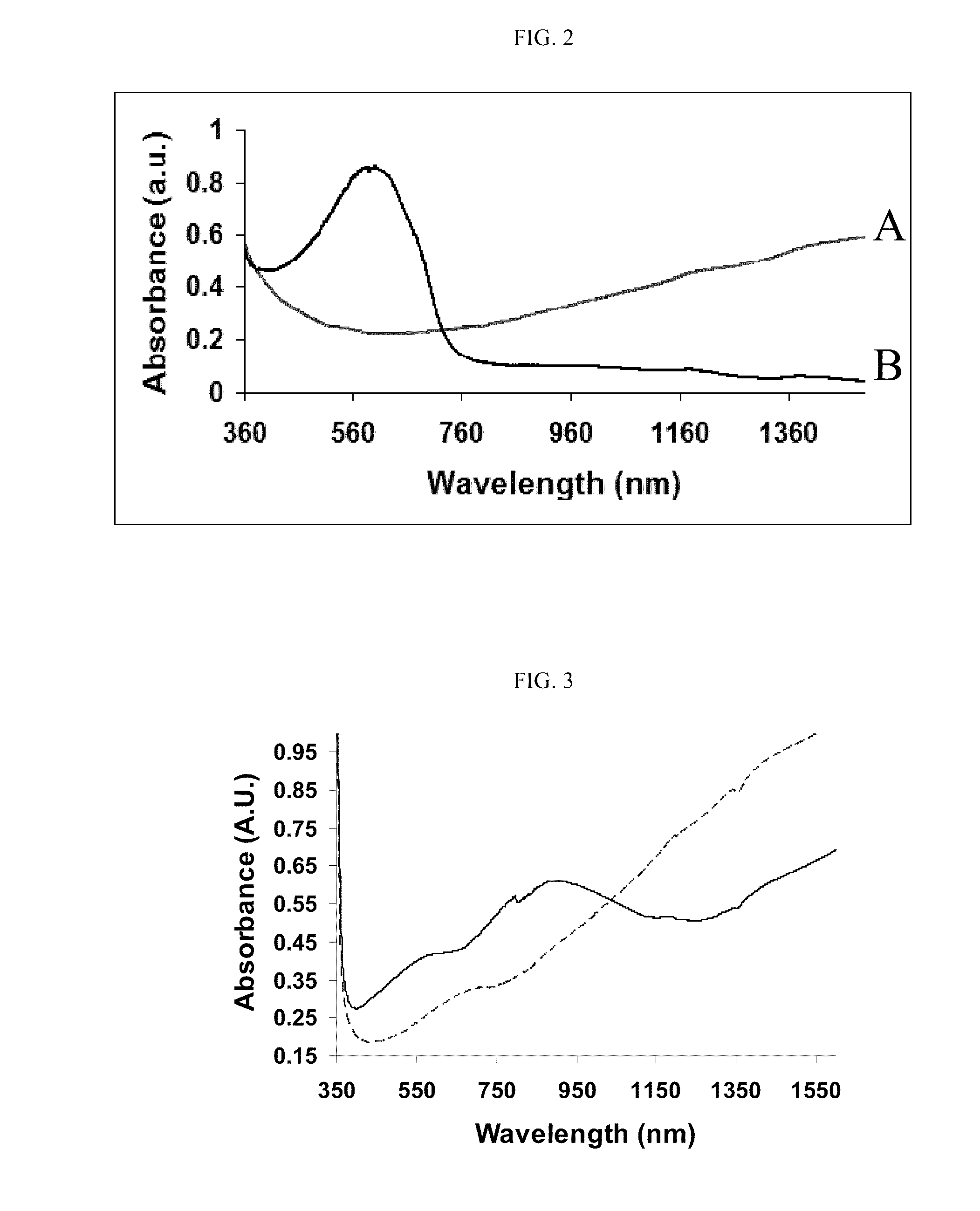Formation of conjugated polymers for solid-state devices
a solid-state device and conjugated polymer technology, applied in the field of electrochromic devices, can solve the problems of poor yield of electrodeposition processes, cost and waste of electrolyte baths,
- Summary
- Abstract
- Description
- Claims
- Application Information
AI Technical Summary
Benefits of technology
Problems solved by technology
Method used
Image
Examples
example 1
In Situ Polymerization of EDOT in an Assembled Solid-State Device
[0127]A device was assembled using a glass / indium-doped tin oxide (ITO) substrate, a polyethylene terephthalate (PET) / ITO substrate, and an electrolyte composition containing 1 gram lithium trifluoromethanesulfonate (LITRIF) salt, 5 grams of polyethylene glycol diacrylate (PEG-DA; Mn=700) as the gel electrolyte precursor, 5 grams of propylene carbonate (PC) plasticizer, and 17.5 milligrams of 2,2;-dimethoxyphenylacetophenone (DMPAP) UV-activated cross-linking agent. To the electrolyte composition was mixed 250 milligrams of 3,4-ethylenedioxythiophene (EDOT) as the electroactive monomer. PEG-DA is crosslinked using UV light 365 nm, 5.8 mW / cm2 for about 15 minutes.
[0128]The device has been shown to switch optically at the same rate as devices prepared with PEDOT films prepared by electrodeposition. Over the course of 50 cycles, no perceived losses had occurred. The CIE Lu′v′ color coordinates for the device containing in...
example 2
In Situ Polymerization of EDOT in an Assembled Solid-State Device using an Ionic Liquid
[0130]A solid-state device similar to Example 1 was prepared using ionic liquid 1-butyl-3-methylimidazolium hexafluorophosphate (BMIMPF6) in the electrolyte composition with no plasticizer component.
example 3
Exploration of the In Situ Polymerization of EDOT in an Assembled Solid-State Device before and after Crosslinking of the Gel Electrolyte Precursor
[0131]Two solid-state devices similar to Example 1 were prepared using no plasticizer. In the first device, the gel electrolyte precursor is crosslinked prior to the in situ polymerization of EDOT. In the second device, a voltage is applied to polymerize EDOT prior to the crosslinking of the gel electrolyte precursor. The second device exhibited a better switching speed (2-5 seconds) and a lower conversion time (30 seconds), while the first device took up to 5 minutes to make a film of PEDOT and exhibits over 25 seconds to switch. It has been shown that the conjugated polymer can be prepared prior to or post crosslinking of the gel electrolyte precursor allowing for more flexible device assembly processes.
PUM
| Property | Measurement | Unit |
|---|---|---|
| temperature | aaaaa | aaaaa |
| melting points | aaaaa | aaaaa |
| wavelengths | aaaaa | aaaaa |
Abstract
Description
Claims
Application Information
 Login to View More
Login to View More - R&D
- Intellectual Property
- Life Sciences
- Materials
- Tech Scout
- Unparalleled Data Quality
- Higher Quality Content
- 60% Fewer Hallucinations
Browse by: Latest US Patents, China's latest patents, Technical Efficacy Thesaurus, Application Domain, Technology Topic, Popular Technical Reports.
© 2025 PatSnap. All rights reserved.Legal|Privacy policy|Modern Slavery Act Transparency Statement|Sitemap|About US| Contact US: help@patsnap.com



